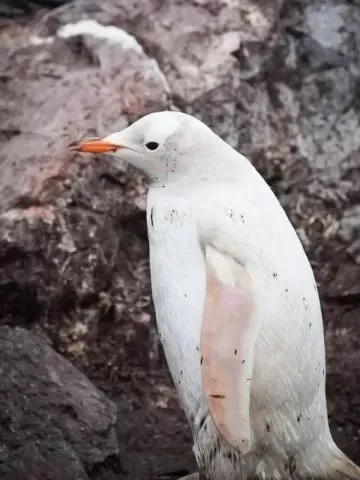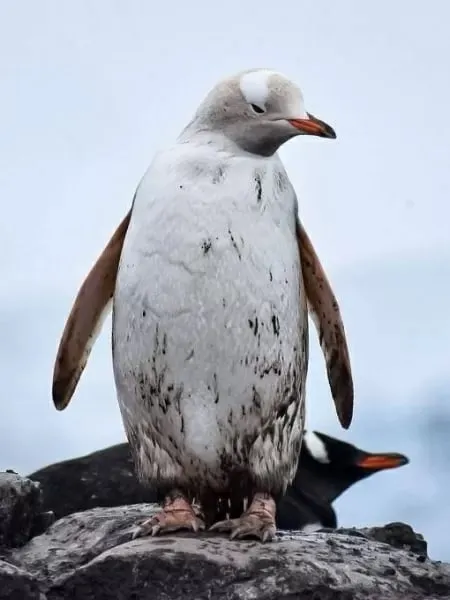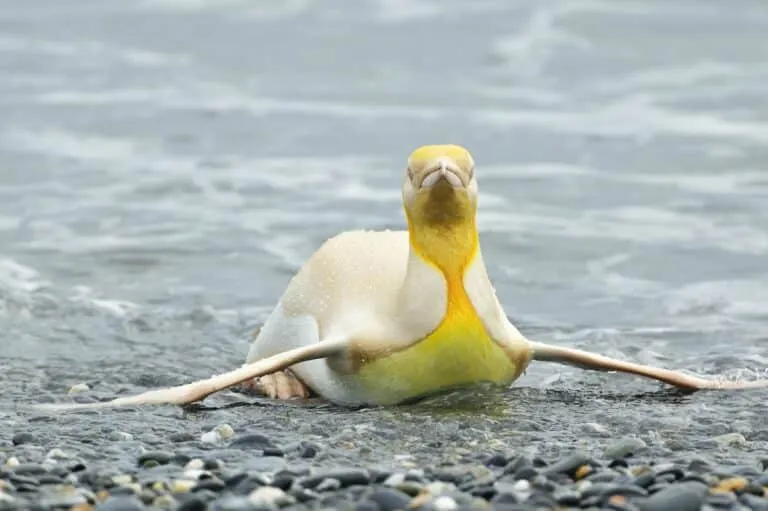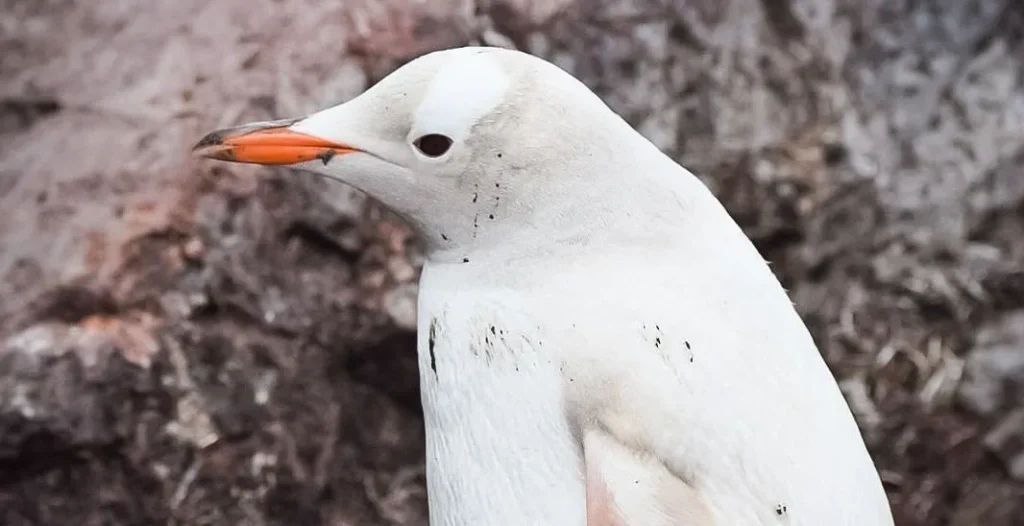The Fascinating Animal Kingdom
The animal kingdom is truly fascinating, with an explosion of colors, diversity, and unique characteristics. It’s impossible to talk about diversity in the world without mentioning animals, as they are everywhere and come in millions of species. Recently, a rare completely white penguin was spotted in Antarctica, surprising everyone.
Completely White Gentoo Penguin
The gentoo penguin does not have the usual black and white plumage. Instead, it is as white as snow due to a condition called leucism. Naturally, the Chilean Navy team at the Gabriel González Videla base in Antarctica was amazed when they spotted the animal.
Sighting

“On January 4th, we had the arrival of a very peculiar penguin, completely white,” reported Hugo Harros, a cook at the scientific station located at the Capitanía de Puerto Bahía Paraíso, in the northern Antarctic Peninsula.
Fourteen people live at this base amidst a colony of thousands of penguins, scientifically known as Pygoscelis papua. They are recognized by their black upper bodies, with white touches on their bellies and around their eyes. However, the spotted penguin was completely different from the others,” noted Harros, a 33-year-old petty officer.
He added that the penguin had leucism. This is a genetic variation that partially or completely affects the color of an animal’s skin, feathers, or fur. However, this condition does not make the animal more sensitive to the sun, as in the case of albinism.
According to Diego Mojica, a marine biologist at the Malpelo Foundation and other Marine Ecosystems, who is accompanying an Antarctic mission of the Colombian Navy aboard the scientific vessel ARC Simón Bolívar, leucism “is the product of a recessive gene that is apparently hereditary. Among thousands of penguins, one individual may be born with it.”
Unique Penguin

When they saw the penguin, Harros made several videos, in which the animal can be seen with a very light reddish beak and wings, and whitish plumage.
According to the petty officer, the people at the base “were very surprised by the encounter we were having, and we quickly wanted to take photos to keep as a souvenir.”
The species of this penguin, Pygoscelis papua, has a population of 774,000 individuals, which is why the International Union for Conservation of Nature (IUCN) considers it stable. However, according to scientists’ estimates, human activity could impact the health of these animals.
So much so that, in 2022, a colony of these penguins was discovered in a southern location in Antarctica. This raised concerns about the potential impact of climate change.
Other Unique Penguins

Penguins are known for always wearing their “tuxedos” with their characteristic black and white colors. But as seen, they can be completely white and even yellow.
Belgian wildlife photography and expedition guide Yves Adams went on a two-month photographic expedition in 2019 in the South Atlantic. The group he was with made a stop on an island in South Georgia to photograph a colony of 120,000 king penguins.
While unloading equipment and food on Salisbury Plain, Adams saw something unusual. In a sea of black and white penguins, there was one that stood out.
“I had never seen or heard of a yellow penguin before. There were 120,000 birds on that beach and it was the only yellow one,” he said.
However, this wasn’t the first time a yellow penguin was seen in history. Studies on leucism in penguins have been conducted since 2000. But it seems that these are the first photos of such an animal on the internet, especially of such high quality.
In addition to being lucky to have seen the animal, Adams was also fortunate to be close enough, about 50 meters, for the photos to be so good and to show the yellow penguin in all its glory.
What makes the penguin yellow is a condition called leucism. Animals with it lack part of their pigmentation, causing changes in their colors. Penguins can become white, pale, or have irregularities in their skin, fur, feathers, or scales. However, unlike albinism, this condition does not affect the animals’ eyes.
Penguins with this condition do not produce melanin, which is why their black feathers turn yellow. According to a study on leucism in penguins, depending on the species, the likelihood of an animal having this condition is one in 20,000, potentially as high as one in 146,000. So, in a colony of 120,000 individuals, it is likely that a penguin with leucism will be found.
The effect of this coloration on the animal’s survival is still unknown. But since it is quite unusual, it is safe to think that it might impact other areas, such as finding a mate or being easier or harder to detect by predators.
FAQs
What is leucism?
Leucism is a genetic variation that affects the coloration of an animal’s skin, feathers, or fur. Unlike albinism, leucism does not make the animal more sensitive to the sun and does not affect the eyes.
How common is leucism in penguins?
Leucism in penguins is quite rare, with a likelihood of one in 20,000 to one in 146,000, depending on the species.
What impact does leucism have on penguins?
The impact of leucism on penguins’ survival is still unknown. It might affect their ability to find a mate or make them easier or harder to detect by predators.
Where was the white gentoo penguin spotted?
The white gentoo penguin was spotted at the Gabriel González Videla base in the northern Antarctic Peninsula.
Are there other penguins with unusual colors?
Yes, there are penguins with leucism that can appear white, pale, or even yellow due to the lack of pigmentation.


